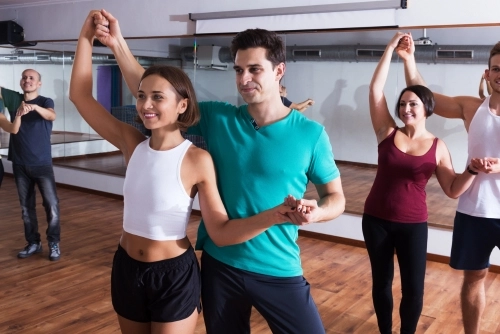All About Dance San Francisco
Wiki Article
The Facts About Dance San Francisco Revealed
Table of ContentsThe Only Guide to Dance San FranciscoHow Dance San Francisco can Save You Time, Stress, and Money.Getting My Dance San Francisco To WorkThe Definitive Guide for Dance San Francisco
Allow's think about Salsa dancing and songs as a huge Tree that appears like this: Salsa is danced worldwide while lots of technical facets of the dance coincide throughout styles (6 actions over 8 beats danced on a quick-quick-slow or slow-quick-quick rhythm), there are a number of "hallmark" attributes of the main designs of Salsa that differentiate one from the other.Pairs joining a Casino Rueda dance all relocate unison as called by a Leader. Distinguishing attributes of Cuban style salsa are circular turn patterns (with "break back" actions on matters 1 and 5) as well as body language influenced by traditional Afro-Cuban folkloric dancings. Distinct features of Cali style salsa fasts and intricate maneuvering, danced with a solid hand hold connection in between partners.
The origins of the design are a topic of debate, however it is claimed that New York style Salsa dance came from the 1960's due to the increase of Latin American emigrants after the Cuban Transformation (salsa dancing sf). Eddie Torres is one of the most popular New York design professional dancer, being almost generally credited with popularizing the style to dance centres outside of New york city
The fundamental rhythm of "On-2" is slow-quick-quick. The "youngest" of the designs of Salsa, L.A (https://gravatar.com/dancesff0aaee7575). Design (some people have called it "West Shore" style) became popular in the 1990's and has its beginnings in ballroom (Mambo, Swing and Cha, Cha, Cha). Turn patterns lead and comply with techniques are heavily affected by these styles, with the Cross Body Lead being the keystone of the style
All about Dance San Francisco
Style are implementation of turn patterns and numbers in the "slot", with the break actions on counts "1" and "5". While Salsa songs has solid origins in Cuban, Colombian and Puerto-Rican folkoric practices, it can not be marked down that all Afro-Latin and Latin American societies have added to contemporary Salsa songs as we recognize it today.


3 Simple Techniques For Dance San Francisco
differentiating features of Salsa music are: 4/4 measure signature, Child Clave and Tumbao rhythms, Montuno Piano Unless you have a history in songs, the above 3 characteristics probably imply nothing to you. An easier method to explain Salsa songs is how it does NOT seem like various other kinds of Latin American preferred music.
It's time for lessons. With many studios out there and different styles to select from, where does a complete newbie see this site begin? The majority of brand-new professional dancers choose to learn L.A. "On-1" style slotted Salsa styles are the most common in The United States and Canada (with some exceptions of some urban centres that still primarily welcome Cuban and Puerto Rican designs) and L.A.
.A. Design will swiftly show you the basics of Salsa timing, weight transfer and turn pattern execution. Numerous dancers, once they've had a year or more of dancing L.A. Style Salsa under their belts, "button" to New york city style in order to diversify their dance vocabulary; however many dancers choose to stick to just one style of Salsa and enjoy their time on the dance flooring because particular style. salsa dancing sf.
Style and New York Design all being danced in the exact same club, with most of the dancers being able to switch from one design to the various other from one tune to the next. salsa dancing sf. Regardless of which design you select it's crucial to adhere to that design till you're very comfortable with the principles of timing, body rhythm and structure step execution before considering "switching" designs (if you wish to)
Once you start lessons prepare to commit time and power to finding out exactly how to dance generally it takes a complete rookie (i. e., someone with little or no dance experience) regarding 6 months of actively taking lessons and heading out and practicing at the very least two times a week to get to a factor where pattern execution begins to feel "all-natural".
Report this wiki page